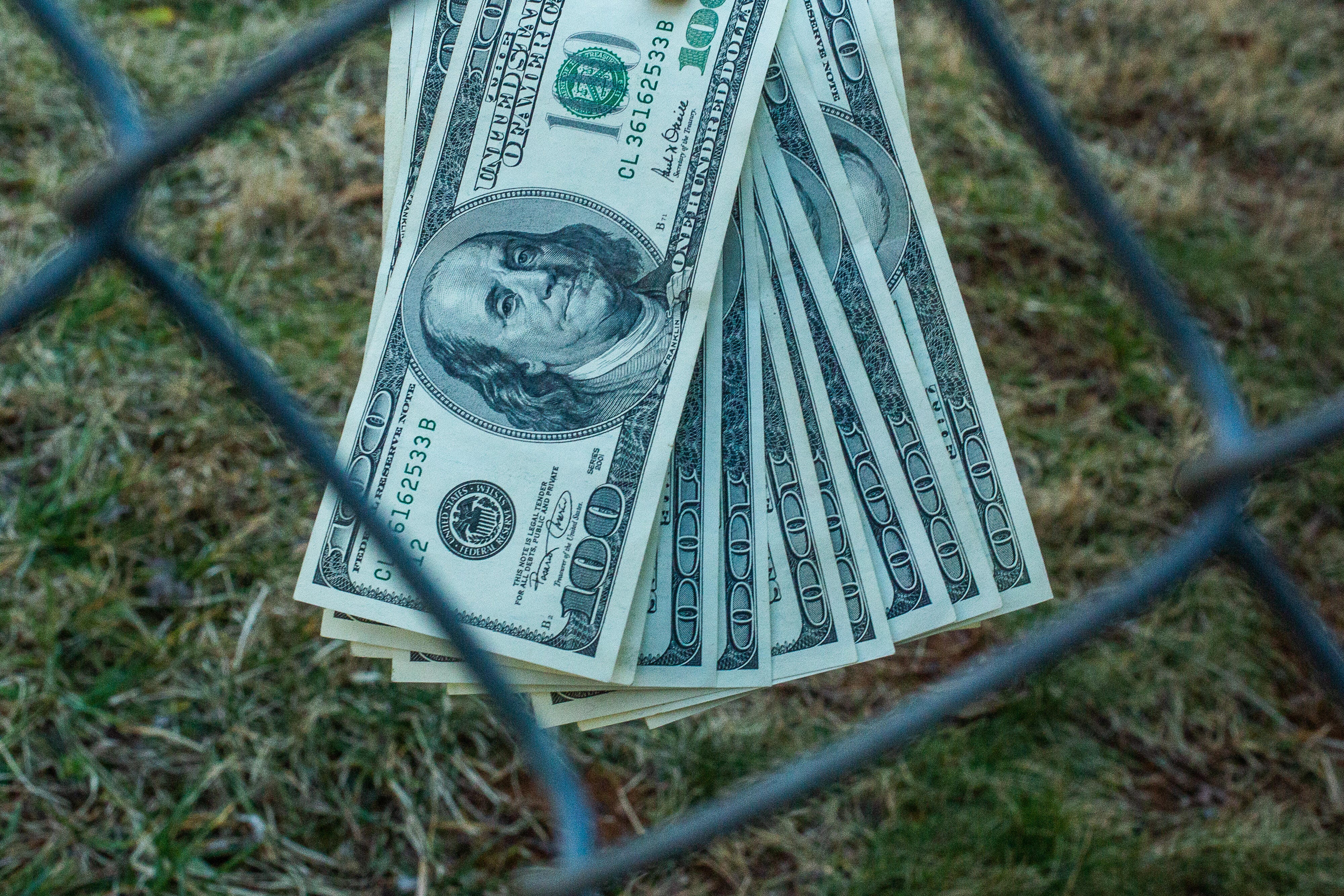
The states canceling federal unemployment programs have different end dates. Some programs expire June 12.
Sarah Tew/CNETFirst-time unemployment claims dipped to 376,000 last week, the lowest point since the pandemic hit the US economy in March 2020. In an effort 25 governors say will push more unemployed workers to jobs, half of the US states say they will pull out of the pandemic-related federal unemployment benefits program that runs to Labor Day. Four states -- Alaska, Iowa, Mississippi and Missouri -- will exit the $300-a-week benefit program this Saturday, June 12.
That means about 4 million jobless Americans will be left in the lurch this summer. The White House has responded by saying that states are free to make their own decisions and that the federal government won't intervene. The long-term unemployed, as well as freelancers, could lose coverage entirely. And President Joe Biden recently indicated that he doesn't plan to extend those benefits beyond the Sept. 6 cutoff.
You might be curious about other unemployment news while you're here: The IRS is refunding millions to those taxed on their 2020 unemployment benefits, and some states are offering a back-to-work bonus to fill jobs. Here's more information about the advanced child tax credit payments starting July 15 and stimulus "plus-up" payments. You might also be interested in whether the government has back pay you need to claim. This story has been updated recently.
State cutoff dates for enhanced federal unemployment benefits
Citing labor shortages, state governors say pandemic-related unemployment benefits discourage workers from taking jobs. Many economists and analysts disagree, noting that several factors are preventing people from finding suitable work -- including low wages, lack of child care and fear of contracting COVID-19.
Here are the new end dates for the 25 states announcing an early halt to enhanced jobless benefits. If your state is not listed below, those benefits are set to expire on Labor Day.
Early end dates for enhanced jobless benefits in 25 states
| Expiration | State |
|---|---|
| June 12 | Alaska, Iowa, Mississippi, Missouri |
| June 19 | Alabama, Idaho, Indiana, Nebraska, New Hampshire, North Dakota, West Virginia, Wyoming |
| June 26 | Arkansas, Florida, Georgia, Ohio, South Carolina, South Dakota, Texas, Utah |
| June 27 | Montana, Oklahoma |
| July 3 | Maryland, Tennessee |
| July 10 | Arizona |
Some of those states, including Arizona, Montana, New Hampshire and Oklahoma, will instead offer financial incentives for individuals to find work.
States that are not ceasing their participation in federal programs could reimpose stricter rules -- many of which were suspended during the pandemic -- for those collecting unemployment. Hawaii, for example, is requiring that jobless workers prove they are actively searching for work.
Other states, like Colorado and Connecticut, are continuing the $300 payments but offering their own new-job bonuses. New York may also join in implementing signing bonuses for those who take and hold a job. Since each state has varying requirements, check with your state for rules.
White House reaction to states ending unemployment aid early
Labor Department officials say their hands are tied and can't counter decisions by state governors to stop participation in the national unemployment programs.
Moreover, White House officials have indicated they will not continue the enhanced jobless benefits past September in the other states, saying they were intended to be temporary. In his latest speech on June 4 on last month's jobs report, President Joe Biden underlined that "it makes sense" for those supplemental unemployment benefits "to expire in 90 days."
In his remarks on the economy last month, Biden had reaffirmed the guidelines for receiving federal unemployment insurance: "We're going to make it clear that anyone collecting unemployment who is offered a suitable job must take the job or lose their unemployment benefits." According to the Department of Labor, if you turn down a suitable job, you can be denied unemployment benefits: "You must be able, ready and willing to accept a suitable job."
News on PUA coverage for the self-employed
The March extension of unemployment benefits also applied to Pandemic Unemployment Assistance: aid for workers who aren't normally eligible for unemployment insurance. It covers freelancers, gig workers, independent contractors and part-time workers.
Most of the states that are cutting off the enhanced benefits are also stopping PUA and terminating the Pandemic Emergency Unemployment Compensation program. Online groups calling to extend pandemic unemployment programs through the crisis offer more information.
In a May 13 letter to the Department of Labor, Sen. Bernie Sanders appealed to the federal government to continue providing pandemic unemployment assistance to workers. Saying that jobless Americans will plunge into poverty in states slashing federal aid, he argued, "The PUA program has served as a backstop for our broken and outdated unemployment insurance (UI) system for over a year."

If you're an independent contractor, you may lose unemployment benefits entirely -- or not, depending on your state.
Sarah Tew/CNETWhat to know about the $300 weekly bonus
Unless your state is one of those that have opted out (see chart above), the enhanced unemployment benefits will continue until Labor Day, Sept. 6, granting a $300 weekly federal bonus on top of what the state pays. That extra money could allow unemployment recipients to receive a total of up to $7,500 for the 25 weeks spanning from March to September.
While unemployment rates are lower than they were at the start of the pandemic last year, as of this April some 16 million Americans (1 in 10 workers) were still receiving some kind of jobless aid. According to the Bureau of Labor Statistics, more than one in four jobless Americans have been without unemployment for over a year.
While members of Congress had earlier pushed for the additional $300 to continue through the pandemic, many Republican and Democratic lawmakers are outright opposed or increasingly skeptical of the added benefit.
Given Biden's most recent remarks, it's unlikely that those enhanced benefits will be renewed after Labor Day, but we will continue to follow the economic rebound and the debate over unemployment programs over the summer.
Get an IRS tax break on 2020 unemployment insurance
First, it's important to know that the IRS treats unemployment insurance as income, which means it's subject to taxation. In most cases, the state can withhold taxes like a typical paycheck. However, it's estimated that millions of unemployment benefit recipients had no taxes withheld, which means they would've owed a substantial amount when filing tax returns.
To counter that, the March stimulus law included a tax exemption of $10,200 (or up to $20,400 for those filing jointly) for those with an adjusted gross income under $150,000 during 2020. That means the first $10,200 of unemployment insurance will not be taxable -- so if someone received $20,000 in benefits in 2020, they would only be taxed on $9,800 of it. The $10,200 is the amount of income exclusion for single filers, not the amount of the refund. (The amount of the refund will vary per person.)
Some states are not providing a tax break. According to a chart by the tax preparation service H&R Block, 11 states aren't offering the tax break: Colorado, Georgia, Hawaii, Idaho, Kentucky, Minnesota, Mississippi, New York, North Carolina, Rhode Island and South Carolina. Other states, like Indiana and Wisconsin, are only offering a partial tax break.
Some 13 million taxpayers who received jobless benefits last year and paid taxes on the money are eligible, though not everyone will receive a refund depending on past-due debt. We explain what you need to know here, including how to look for that refund on your tax transcript.
More on unemployment tax refunds
After some initial delays, more single filers began seeing deposits in their checking accounts starting May 28, with 2.8 million refunds going out the first week of June. The IRS said the next set of refunds will go out mid-June.
The IRS has issued instructions on how to enter the exemption on tax forms. People who already filed their taxes this year without the exemption will have their returns automatically recalculated by the IRS. While the IRS has said that taxpayers do not need to file an amended federal tax return to get their tax break, a handful of states are requiring taxpayers to file an amended state tax return to get a state refund. Here's how to find out your state's rules.
Mixed Earner Unemployment Compensation (or MEUC)
For the first time, the original CARES Act in early 2020 allowed some self-employed workers to temporarily qualify for unemployment benefits. The December 2020 stimulus bill had added additional compensation for someone earning a mixed income from a traditional job and employment as a contractor, who would either receive the unemployment insurance payment or PUA, but not both.
With the Mixed Earner Unemployment Compensation program, a person who made substantial income from self-employment or a contracting job could receive an extra $100 a week. The MEUC was also extended with the American Rescue Plan Act until Sept. 6, though some states are bowing out of that aid as well.
For example, let's say you made $50,000 in 2019, which was split between $30,000 from a contractor job and $20,000 from a part-time job at a company. If you were laid off, the state unemployment office would calculate whether you'd receive benefits for the $30,000 via PUA or $20,000 via unemployment insurance, but not a combination of the two.
Though someone who works a traditional job and makes $50,000 a year in New York would receive $480 a week from unemployment insurance, by having a mix of the two you'd get the greater of the two different amounts, which would be the PUA of $288 a week rather than the $280 from unemployment.
Mixed Earner Unemployment Compensation will now give that person an extra $100, but only if the state participates.
Additional information on state cutoffs and jobless benefits
States have a limit on how many weeks a person can stay on unemployment. Most provide 26 weeks, with some granting as few as 12 weeks and others as many as 30 weeks. Before the American Rescue Plan, the federal government had extended pandemic relief benefits to the unemployed an additional 24 weeks. Under the current package, federal unemployment insurance will be extended through Labor Day, offering a total of 53 weeks of additional benefits -- except for states opting out.
While many states have automatically renewed unemployment insurance benefits, some recipients may have issues when they reach the benefit year-ending date. States limit benefits to one year, and that compensation is typically cut off after that date. Many states require recipients to either file a new claim or request an extension. Because it varies from state to state, those who have been unemployed for at least a year should get in contact with their state's labor department.
How to apply for unemployment coverage
If you've been laid off or furloughed, you're qualified to apply for unemployment benefits in the state where you live. Once the state approves your claim, you can apply to receive whatever state benefits you're entitled to. Because states cover 30% to 50% of a person's wages, there isn't a single sum you could expect on a national basis. Each state's labor office provides information about its particular unemployment benefits.
Eligibility criteria vary from state to state, but the general rule is that you should apply if you've lost your job or been furloughed through no fault of your own. This would include a job lost directly or indirectly because of the pandemic.
In February, the federal Department of Labor updated its eligibility requirements to include people who refused to return to work due to unsafe coronavirus standards.
from CNET https://ift.tt/3wkngNm
via IFTTT




No comments:
Post a Comment